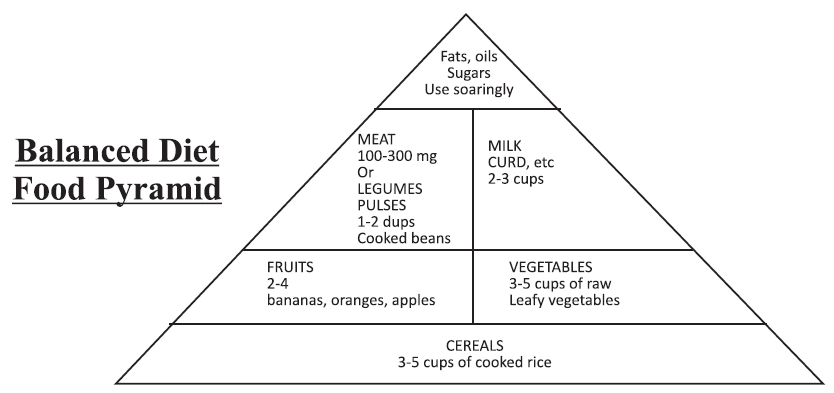by Dr. Vinaya Kunjir
The treatment of children with arthritis /rheumatic diseases is often different from that in adult arthritis. There are two reasons- firstly, the disease process might be different with different outcomes with or without treatment. Secondly, there are some special nutritional, growth and development considerations in children of various ages.
Normal nutrition, growth and development in children
Immediately after birth, an infant loses about 5-10% of the birth-weight. But by 2 weeks, the infant starts to gain weight and grows quickly.
By the age of 4-6 months, infant’s weight should be double its birth weight.
Between the ages 1-2 years, the weight gain is 5 pounds(2.25 Kgs).
Between the age 2-10 years, the child continuous to grow at a steady pace. Height growth is steady at the rate of 2.5 inches per year.
Between the ages 9-15 years, a final growth spurt begins at the start of puberty. Height growth is maximum with 3.5 inches per year.
The child’s nutrient needs correspond with these changes in growth rates. Poor nutrition can cause serious problems with the intellectual development in children. A child with poor diet may feel tired, may fall sick and miss school.
In a healthy child, the daily calorie requirement is 80-120 kcal/kg/day for the first year of life with subsequent decrease of 10 kcal/Kg for 3 years period thereafter.
This requirement is few times higher than that of adults. Periods of rapid growth and development near puberty require increased calories and iron than adults. It has been shown in studies that a diet providing energy and iron supplementation improves mental development and behavior in undernourished children. If a child’s caloric intake is 500Kcal/day greater than the body expenditure, it will increase the body weight by 1 pound (450gms) per week.
Nutritional impairment is frequent in children with arthritis/rheumatic conditions. If malnourished children with arthritis are given adequate nutrition, their protein stores improve in spite of active arthritis.
In rheumatic diseases of childhood, growth retardation and decrease in final height can be due to the disease itself or due to the side-effect of treatment mainly steroids.
The main difference between the long bones in adults and children is the presence of a growth plate in the developing bones of children. Arthritis in the adjoining joint affects the growth plate in the involved bones. In children less than 9 years of age, inflammation due to arthritis increases the blood supply to the affected joint (more often the knees) and can cause increased maturation of the affected bones. This can cause the involved leg to be longer. Sometimes, arthritis can cause decrease in bony development especially the Temperomandibular joint (jaw). Hence, under-developed jaw bone is a common feature in children who are on steroids for a long time as in systemic-onset JIA.
Medicines (DMARDS) can affect growth and bone-strength
= Non-steroidal anti-inflammatory drugs (NSAIDS) – are used to reduce pain and swelling in childhood arthritis. NSAIDS can cause loss of bone density in adults but it is not proven that the same is true in children.
= Methotrexate-it is the most common second line therapy for polyarticular and systemic- onset JIA, in juvenile dermatomyositis. Methotrexate causes osteopenia (decrease in the bone density) in children but the benefits of its anti-inflammatory action in arthritis might override this side-effect.
= Corticosteroids/steroids- they are the most powerful anti-inflammatory drugs and are the main line of treatment of many severe childhood rheumatic diseases like SLE, Juvenile dermatomyositis, systemic JIA. But, there are many side-effects of these steroids like obesity, increased fat deposition in upper back & face, straie, acne, increase in blood sugar or BP, cataract, decrease in blood supply to bones, peptic ulcer and behavioral changes in children. Above all, their action on the growing bones in children is worrisome. Long-term therapy with even low-dose steroids can cause retarded growth in growing children.
Hence, as soon as the life-threatening complication of the disease is controlled, steroids should be gradually reduced and stopped. Bisphosphonates are the drugs used to treat osteopenia in children. In children treated with Bisphosphonates, bone mineral density increases and normal linear growth continues. Catch-up growth occurs in pre-pubertal children. Calcium and Vitamin D supplementation is necessary for strong bones in children and to prevent osteoporosis in adulthood.
The common side-effects of many diseases modifying anti rheumatic drugs (DMARDS) like Hydroxychloroquin, Sulfasalazine, Azathioprine, Cyclophosphamide, Cyclosporine are nausea, vomiting, gastrointestinal upset. But the beneficial effects of these drugs are much more than the side-effects. Some of these drugs can cause decrease in haemoglobin, white blood cells or platelets. Some of them may cause harm to liver or kidneys. Hence, regular monitoring of complete blood counts, liver and kidney functions is required.
Immunization
There are two questions related to immunization and childhood rheumatic diseases.
First, does immunization trigger onset of arthritis or cause increase in the existing arthritis?
Secondly, what vaccines should be given to children with arthritis who are on medications?
There is a study from the western countries which showed that there is no increase in arthritis when children with arthritis received influenza virus vaccination. The same was seen in children receiving steroid therapy. Children with arthritis should receive the regular schedule of immunizations.
There are a few special circumstances and precautions regarding immunization in kids with arthritis.
= Children with severe, active rheumatic disease should not receive any immunization.
= Children undergoing therapy with immuno-suppressant medicines such as DMARDS, steroids should not receive any live virus vaccines.
= Vaccination for chicken pox virus should not be given to children taking steroids more than 20 mg/day for more than 14 days.
The goals of treatment in childhood arthritis/rheumatic diseases are to control the disease process and to ensure normal growth and development. Hence, it is important for parents and the treating doctors/rheumatologists to be aware about the nutritional, developmental and growth issues of children and also about the different side-effects of various treatment.

